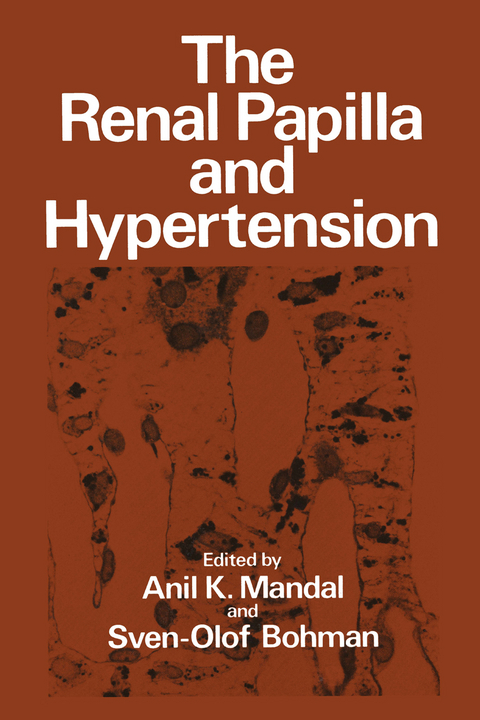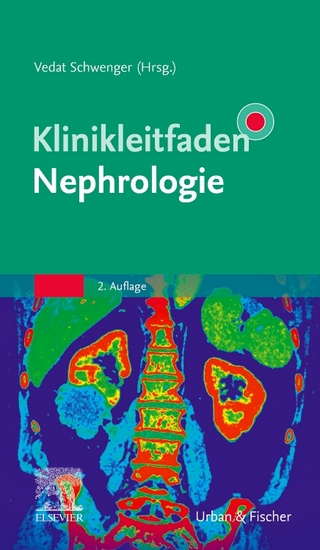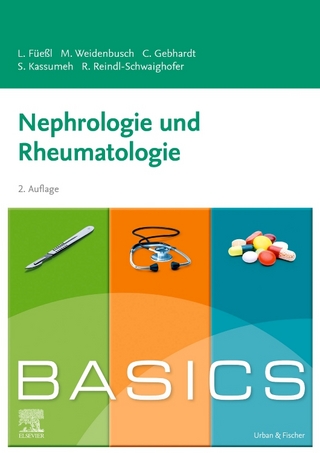
The Renal Papilla and Hypertension
Springer-Verlag New York Inc.
978-1-4684-8117-4 (ISBN)
1 The Ultrastructure of the Renal Medulla and the Interstitial Cells.- 1. Introduction.- 2. The Renal Medulla.- 3. The Interstitial Cells.- References.- 2 Evidence for an Involvement of the Renal Papilla in Hypertension.- 1. Introduction.- 2. Antihypertensive Action of Transplants of Fragmented Renal Papilla.- 3. Monolayer Tissue Culture of RIC.- 4. Antihypertensive Action of Cultured RIC.- 5. Morphology of Transplants of Cultured RIC.- 6. The Lipid Granule—Cisternal Organelle Relationship of RIC.- 7. Renomedullary (RIC) Deficiency in Hypertension.- 8. Renomedullary Interstitial Cell Tumor.- 9. Inhibition of the Converting Enzyme (Kininase II) and the Action of RIC.- 10. Antihypertensive Lipids Derivable from Fresh Renal Medulla.- 11. Antihypertensive Action of Cultured RIC and of Lipids Derived from the Same Tissue Culture.- 12. Three Additional Special Features of RIC.- 13. Discussion.- References.- 3 Studies on the Mechanism of the Renomedullary Hypertensive Action.- 1. Introduction.- 2. Endocrine-Type Antihypertensive Activity of the Renal Medulla.- 3. The Mediator of Renomedullary Antihypertensive Function.- 4. What Signals the Medulla to Release Antihypertensive Renomedullary Substance?.- 5. The Mechanism of Renomedullary Antihypertensive Action.- 6. Concluding Remarks.- References.- 4 Vasodepressor Substances Extractable from Kidney Tissue.- 1. Introduction.- 2. Earlier Work on Antihypertensive Effects of Extracts of Whole Kidney Tissue.- 3. Renomedullary Antihypertensive Lipids.- 4. Renin Inhibitors and Phospholipases.- 5. Renal Kinins.- 6. Concluding Remarks.- References.- 5 Renal Prostaglandin Synthesis and Metabolism in Normal and Hypertensive States.- 1. Introduction.- 2. Renal Effects of Prostaglandins.- 3. Regulation of Prostaglandin Metabolism in theKidney.- 4. Prostaglandins in Hypertension.- 5. Renomedullary Interstitital Cells and Prostaglandins.- 6. Renal Prostaglandin Metabolism in the Spontaneously Hypertensive Rat.- 7. Conclusions and Future Directions.- References.- 6 Fatty Acid Composition and Depot Function of Lipid Droplet Triacylglycerols in Renomedullary Interstitial Cells.- 1. Introduction.- 2. Isolation and Characterization of Papillary Lipid Droplets.- 3. Biochemical Investigations of the Renal Papilla.- 4. Comparison between in Vitro and in Vivo Data.- 5. Conclusion: The Physiological Role of the Lipid Droplets of Renomedullary Interstitial Cells.- References.- 7 Alterations in the Renal Medullary and Papillary Interstitial Cells in Experimental and Spontaneous (Essential) Hypertension.- 1. Introduction.- 2. Experimental Hypertensions.- 3. Value of Electron Microscopy in Defining the Chemical Nature of Papillary Interstitial Granules.- 4. Relationship of Renal Papillary Interstitial Granules to Essential (Spontaneous) Hypertension.- 5. Relationship of Interstitial Cellular Granules to Renomedullary Vasodepressor Substances.- 6. Significance of the Studies of the Renal Papillary Interstitial Cells in Rat.- 7. Obstacles to Human Study.- References.- 8 Regulation of Plasma Flow and Other Functions of the Renal Papilla in Hypertension.- 1. Studies of Plasma Flow to the Renal Papilla in Experimental and Spontaneous Hypertension.- 2. Relationship between Renomedullary Interstitial Cell Granules, Sodium, and Prostaglandins in Normotensive and Hypertensive Rats.- References.- 9 Prostaglandin E2 Biosynthesis by Renomedullary Interstitial Cells: In Vitro Studies and Patholphysiological Correlations.- 1 Introduction.- 2. Regulation of Arachidonic Acid Metabolism by Rabbit Renomedullary Interstitial Cells inTissue Culture.- 3. Pathophysiological Correlations.- 4. Conclusions.- References.- 10 Influence of Renal Prostaglandins on Renin Release.- 1. Introduction.- 2. The Renin-Angiotensin System.- 3. The Renal Prostaglandins.- 4. Influence of Renal Prostaglandins on Renin Release.- 5. Prostaglandins and the Different Receptors for Renin Release.- 6. Impaired Prostaglandin Production and Unresponsiveness of Renin Secretion in Essential Hypertension.- 7. Conclusion.- References.
| Zusatzinfo | XXIV, 238 p. |
|---|---|
| Verlagsort | New York, NY |
| Sprache | englisch |
| Maße | 152 x 229 mm |
| Themenwelt | Sachbuch/Ratgeber ► Natur / Technik ► Garten |
| Medizinische Fachgebiete ► Innere Medizin ► Nephrologie | |
| ISBN-10 | 1-4684-8117-7 / 1468481177 |
| ISBN-13 | 978-1-4684-8117-4 / 9781468481174 |
| Zustand | Neuware |
| Haben Sie eine Frage zum Produkt? |
aus dem Bereich


